Today we will talk about metering devices and what electric meter It's better to put it in an apartment. Theoretically, the meter is the responsibility of the company that sells you electricity, but in practice, this issue has to be resolved by the residents of the house or apartment. You are required to have a meter and replace it as needed, for example, if it is old and modern requirements doesn't answer.
And then it arises big question— how to choose an electric meter for an apartment? If you can’t count them, like mosquitoes in summer. Offhand, any experienced electrician will name you a couple of dozen manufacturing companies from Russia and neighboring fraternal republics.
But even the coolest of us will not remember all the types, because there are more than four hundred names. And this is without imported electricity meters from Europe. In short, your eyes widen and your head spins if you need to buy an electric meter for an apartment, and even the price is a secondary issue.
So, we decided to write instructions on how to choose an electricity meter for an apartment or house.
1. Electricity meter for an apartment - design and characteristics
To understand how to choose, you need to know what we are choosing. As the rabbit in Winnie the Pooh said: “I come in different forms!”, the same picture applies to counters.
Induction and electronic
First of all, metering devices are divided by design.
Induction counter was invented a long time ago and until recently only it was used. This is a familiar disk drive that is located on the site or right in the apartment. Inside such a device there are two magnetic coils, current and voltage. Their magnetic field rotates a disk connected to a counting mechanism, which takes into account the kilowatts used.
A distinctive feature of an induction meter is its reliability and long term work. According to the passport, at least 15 years, but in fact, such “electricity accountants” have been quietly working for 30-50 years. But the measurement accuracy is rather weak, as they say, they only catch big fish, and a weak load is passed.
Electronic counter measures flow directly and appeared not so long ago. There are no moving measuring parts in it; consumption data is shown on the indicator board. The electronic recorder can store consumption figures and transmit them, for example, to automated systems"smart House".
Manufacturers promise that they will work for at least 10-15 years, but so far none have reached this age; they appeared only recently. As for reliability, we can say that the electronics can be glitchy, but in general, if done well, it works just as well.
Single-phase or three-phase meter for an apartment
Since electrical networks are single-phase, with a voltage rating of 220 V, and three-phase, with a voltage of 380 V, meters are produced in different types.
Most apartment residents have a single-phase electric meter. Our household electrical networks are designed for 220 Volts, as are home electrical appliances. Is a three-phase meter needed in an apartment? single-phase network? More likely no than yes. Theoretically, if installed, it will keep track of electricity correctly. But the energy sales organization will simply refuse to register it.
A three-phase meter is usually needed in a private home. Much of the equipment there (boilers, water heaters, electric motors) runs on a three-phase network with a voltage of 380 V. There is also a 220-volt electricity meter in the house. He calculates the consumption of a single-phase network, that is, he is responsible for lighting and working irons, kettles, washing machines, TVs, etc.
Advice! For an apartment, it is enough to buy a single-phase electronic electricity meter.
2. What kind of meter is needed for the apartment - multi-tariff or single-tariff
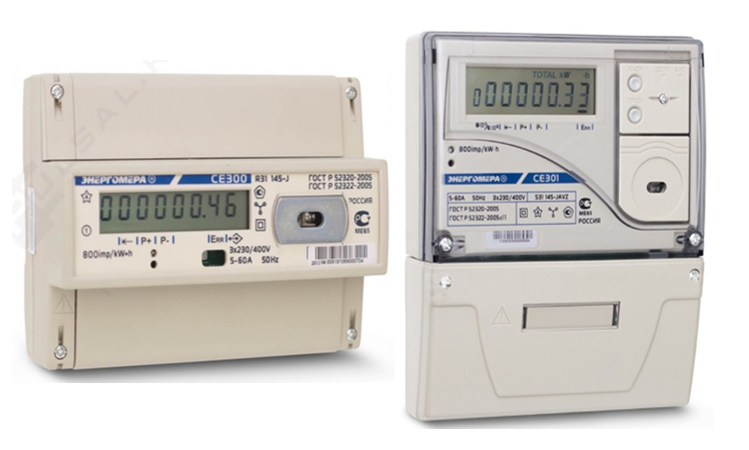
Previously, all metering devices were induction and single-tariff. With the advent of electronic ones, it became possible to count consumed electricity at several tariffs - two, three or more.
A multi-tariff registrar calculates consumption by time, for example, a two-tariff one for the day zone - from 7 am to 11 pm and for the night zone - from 11 pm to 7 am.
Daytime energy is more expensive, nighttime energy is cheaper, therefore, you can schedule the operation of energy-intensive equipment at night. Start washing there or turn on the heater. Profitable? Yes, but here's the story. The difference in day and night tariffs is large in some places, and practically none in others, but a multi-tariff meter is always more expensive than a single-tariff meter.
Therefore, before choosing payment according to several tariffs, estimate the cost for the month and break it down into days/nights. And then calculate according to one tariff. If the savings are half of the single-tariff payment or at least a third, then it makes sense to install a multi-tariff device. It will pay for itself and save you money.
If the difference is 100-200 rubles, then there is no point in bothering with multi-tariff payments. The equipment will not pay for itself soon and the savings are purely symbolic. In this case, it is better to think about smart control energy consumption.
A multi-tariff electricity meter for a home must also be selected based on consumption and taking into account the equipment with powerful electrical equipment. If the water heater is working, partial electric heating, then it is more profitable to use them as much as possible at a cheap nightly rate.
3. How to choose an electricity meter for your home according to accuracy class

Electric meters differ not only in design and number of tariffs, but also in accuracy class. Any device has a measurement error. The accuracy class is the maximum error.
According to modern requirements, an electric meter in an apartment or house must have an accuracy class of 2.0 or lower.
That is why they are forced to change old induction devices, which have an accuracy class of 2.5%. What's the practical point? The higher the error rate, the more the device will miss a weak load and will not count it. For example, many home electrical appliances are in standby or sleep mode part of the time. The energy consumption is small, but it is still there. A meter with a lower error (1-2%) will calculate such consumption, but one with a high error (2.5%) will simply not notice it. This is beneficial for the consumer, but not at all beneficial for energy sales. The undercount turns out to be quite significant.
On the other hand, if you “plug in” a device with an accuracy class of 0.2% instead of two, you will create a holiday for energy sales and a problem for yourself. Your accurate meter will “give” inflated consumption readings. In essence, you will be paying for yourself and your neighbor.
Our advice! Take an electric meter for your house or apartment with an accuracy class of 2.0. The requirements indicate an “upper limit” of error - use this. Send everyone who is forced to install the device with greater accuracy to read the rules.
4. Buy an electricity meter for your apartment on a din rail or with bolts
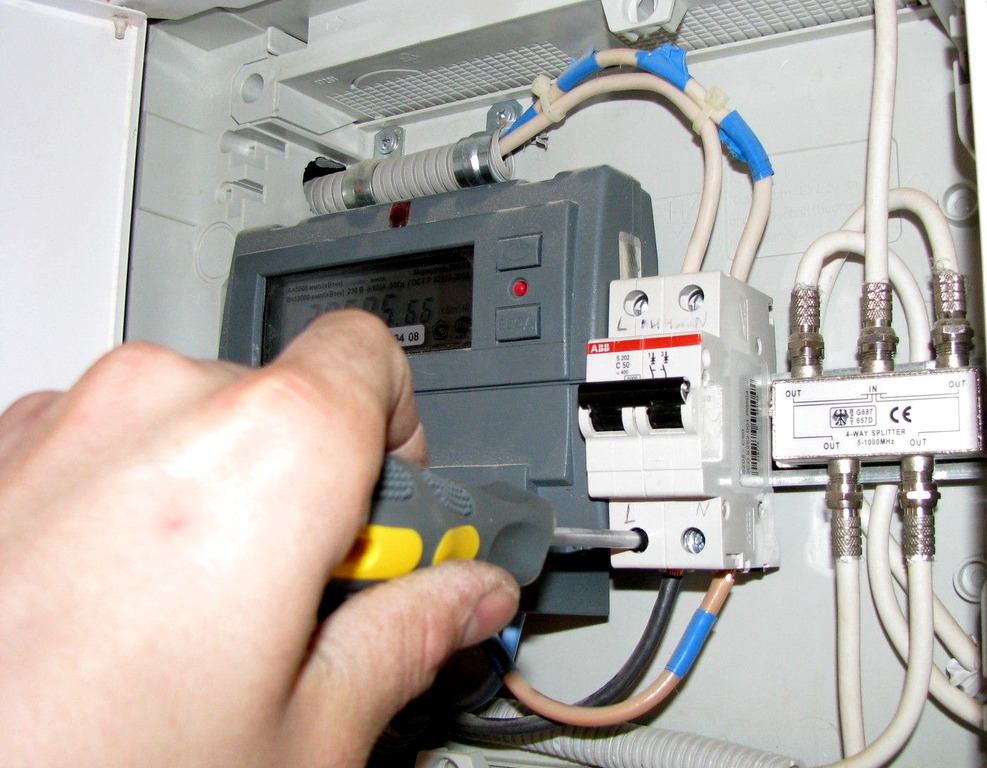
The meters have one more difference - the method of fastening. Manufacturers produce equipment in two versions:
- with DIN rail mounting
- with bolt mounting
DIN rail mounting is most often used in boxes and electrical panels inside buildings and premises. IN apartment buildings The recorder is located on the site or right in the apartment. The installation diagram can be different, a separate meter in the box and separate circuit breakers and RCDs, or all together on one panel. When installing together, it is better to take a modular meter on a DIN rail.
Bolt mounting is more often used in outdoor switchboards, for example, in input and distribution devices of private houses. Bolted fastening secures the equipment more reliably and protects against shifts and loss of contact.
Most meters are installed inside houses, either in the city or outside the city. According to operating rules, devices must operate in a heated room or in a heated panel. DIN rail models are the most best option for installation inside buildings, they are easy to install and dismantle.
What to do if the house is old and the meter is bolted, but you want a new modular one? Take it and tell your comrades from the energy sales that you want mounting on a rail. Fixing the DIN rail into an old panel is not difficult at all, it takes about 5 minutes.
Important point! In fact, energy sales must seal new counter and register it. That is, replacing old equipment with new equipment can be done by any qualified electrician with an access group of at least third.
5. Electricity meter for the apartment - verification date
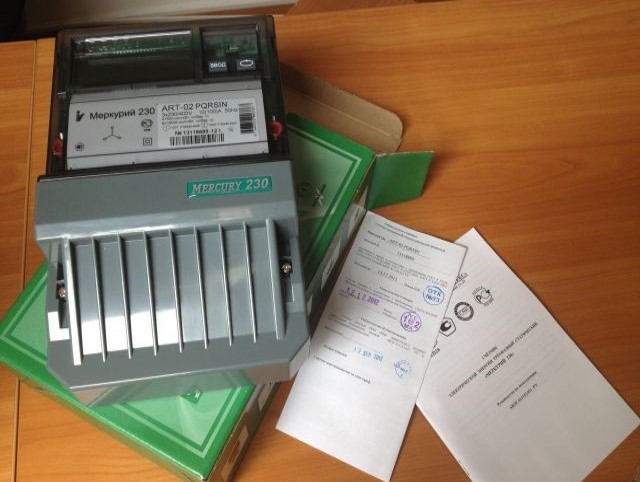
Let's start with the official part. The PUE says that it is single-phase apartment meter must have “seals with the stamp of the state verifier... no more than 2 years old,” and a three-phase meter in a private house must have a state verifier seal “not more than 12 months old.”
Verification is performed at the factory after assembly of the device. The corresponding stamp with the date is placed in the passport and on the meter seal. Theoretically, stores should track the “expiration date” by verification, but in practice this is not done everywhere. That is, you can buy an electricity meter for an apartment or house with an expired verification date. And it will not be registered without a new verification. In addition, you will be punished for “lack of a metering device” by energy sales.
Therefore, when choosing and purchasing, be sure to look at the verification date in the documents and on the meter. It must be within the specified limits, clearly legible in the passport and especially on the seal. An unclear print may “upset” the energy sales inspector. You will also be sent to check the equipment and will be punished for its absence. In general, “the second act of the Marlezon ballet.”
The online store site sells meters with an expiration date for verification, with clearly readable seals and correct documents. With us you get equipment that is reliable in all respects.
6. Which meter to choose for an apartment based on current load
Electrical equipment for flow metering is designed for different load by current. There are three ways to figure out how many amps you need.
1. Find out how many amperes are on the input cable that is connected to the meter. This information can be obtained from an electrician at the housing office or management company.
The first two methods require the help of professionals, the third is available to any apartment owner. You write down on a piece of paper the power of everything that is connected to the outlet, add it up, add a few more kilowatts in reserve and look at the total. If it is within 10 kW, a 60 Ampere meter will be enough for you. If you count more than ten in kW, take an 80 or 100A recorder.
Based on work experience, 60 Amps on a single-phase meter is enough for the eyes and ears of most apartments. Even if there is a lot of equipment, it all turns on extremely rarely, so there is no point in covering all the power.
A three-phase meter in a private house can be taken up to 100 A, if the power supply has agreed to allocate you the appropriate power for the load. The data is indicated in the house design or must be obtained from the energy supply office.
Note! A three-phase meter for a private house can be connected either directly or through a transformer. If the current rating is 50A or not higher than 100A, the device is switched on directly. If the load exceeds a hundred amperes, then you will have to install a transformer when connecting secondary current, and the meter is powered through it.
7. Electricity meters for apartments in the store website
With the main characteristics and requirements for accounting equipment We've figured it out, let's now look at specific models using the example of a catalog website. From us you can buy an electric meter for your home or apartment made in Russia and Europe.
The catalog contains single-phase and three-phase meters under the following brands:
| Mercury counters | Neva counters | Energy meters | ABB meters |
Mercury meters for an apartment or a country house
The equipment is produced by Incotex. "Mercury™" is a widely known trademark, basic accuracy class 2.0. The products are of high quality, reliability and affordable price.
Single-tariff electronic meter Mercury series 201 and 202
| Counter Mercury 201.5 |
Any accommodation in modern conditions must be equipped measuring instruments, allowing you to take into account the consumption of water, gas, and electricity. To account for consumed electrical energy Back in the 19th century, the first electric meter was created.
Today there is a large variety of them. Below we will look at what types of electric meters there are and which one is better to install at home, in the country and in the apartment.
Classification by principle of action
According to the principle of operation, electric meters are:
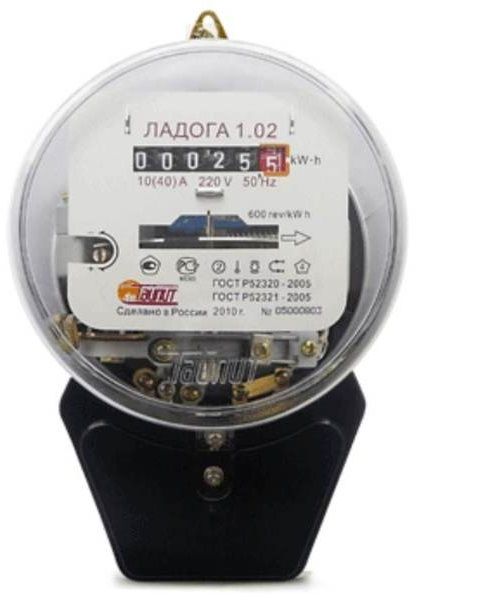
Induction meters are known to everyone; these are the meters that are installed in most houses of our country. Induction meters contain a current coil, a voltage coil and a metal disk.
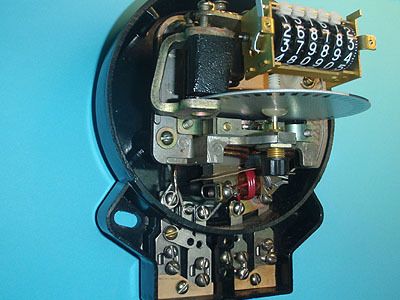
Internals of an induction meter
Under the influence magnetic field coils formed from the mains voltage applied to them, the disk begins to rotate and pulls wheels with numbers reflecting the amount of electrical energy consumed. The higher the network voltage and, accordingly, the current, the faster the disk will rotate, and the faster the electricity meter readings will increase.
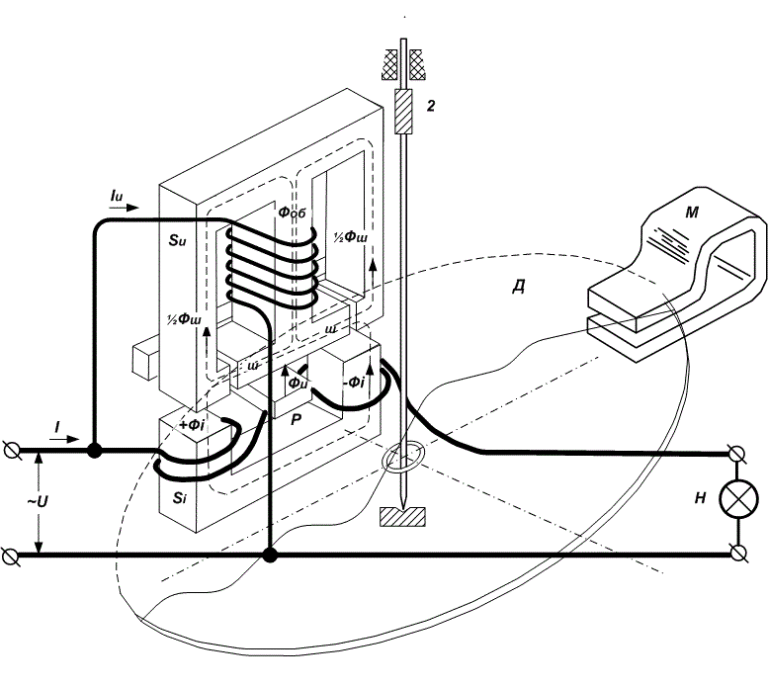
Induction counter device
Main advantages induction meters is their:
- simplicity,
- reliability,
- durability (their service life exceeds 15 years),
- relative cheapness.
A significant disadvantage of this type of device is that they have short accuracy class, that is, a fairly large error in its readings - approximately 2%.
This means that consumers may or may not overpay for the energy they use.
Electronic meters are devices where there are no mechanical devices. They consist exclusively of microcircuits and semiconductors, to which the electricity. Such counters immediately display the values energy consumed in digital form on the built-in electronic display.
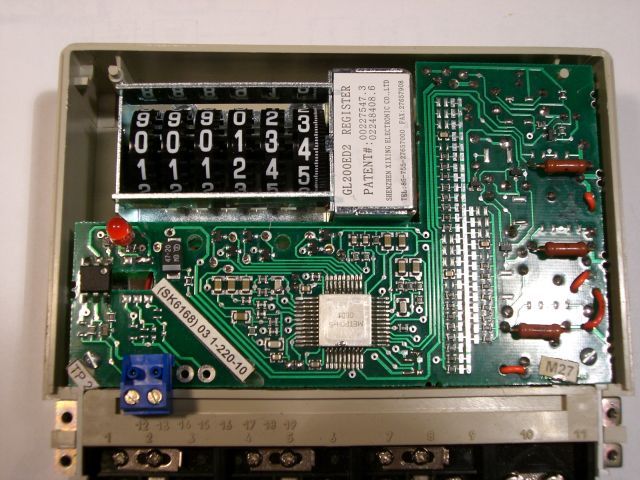
Internals of an electronic meter
The main advantages of this type of counters include:
- small dimensions,
- high class accuracy,
- convenience and ease of use,
- ability to calculate consumption according to various tariff plans.
The disadvantages of electronic meters include their high cost and low service life, which makes them unattractive for a wide consumer audience.
Classification by tariff
According to tariffs, electricity meters are:
- one-;
- two-;
- multi-tariff.
Single tariff will take into account electricity consumption only at one tariff. Such devices are most often used in the home or country house. Two-tariff ones, accordingly, allow you to take into account electricity consumption according to two tariff plans, for example, during the day they will count energy consumption according to one tariff, and at night - according to another.
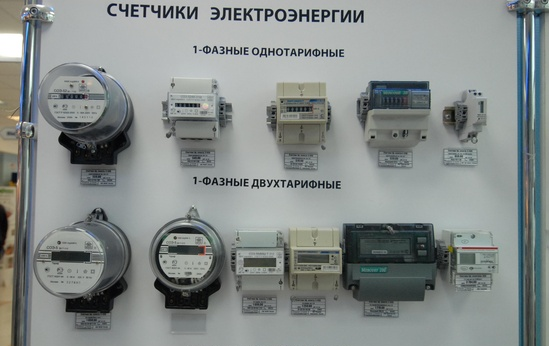
Electricity meters
It can be beneficial large industries who work around the clock. Multi-tariff meters will count electricity at several tariffs, which will help significantly reduce costs. But choosing such devices for a home, apartment or for installation in a country house is not practical due to their increased cost.
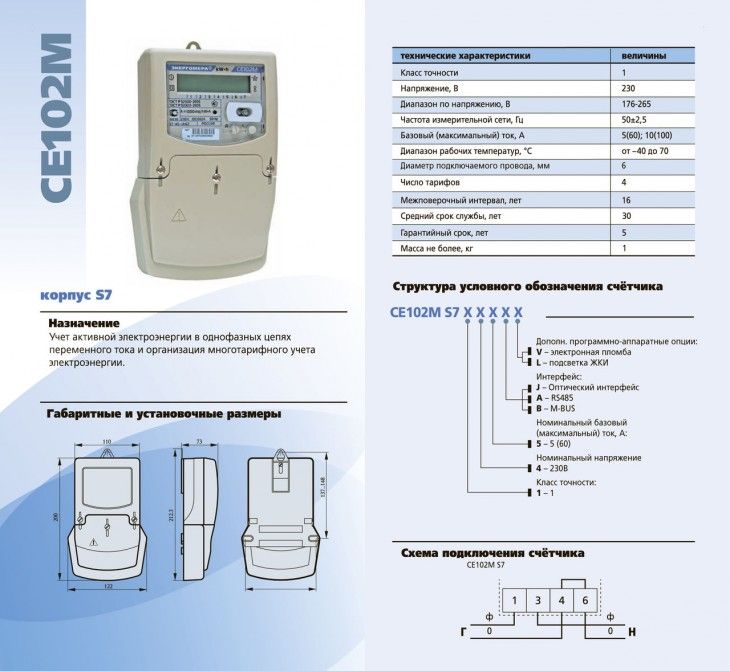
Example of characteristics of a multi-tariff meter
Classification by type of measured energy
By type of energy, meters are single-phase and three-phase. Single-phase ones are installed on a two-wire single-phase network and take into account only active energy.
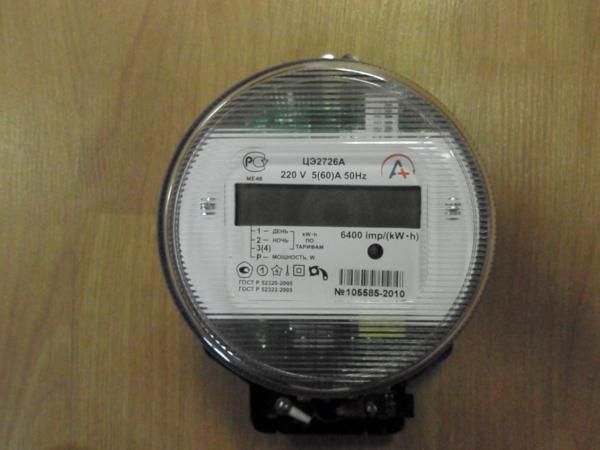
single-phase electronic electricity meter
Three-phase connect to three-phase network and in addition to the active component, the reactive component of energy is also considered. Such devices can help save money on large facilities.
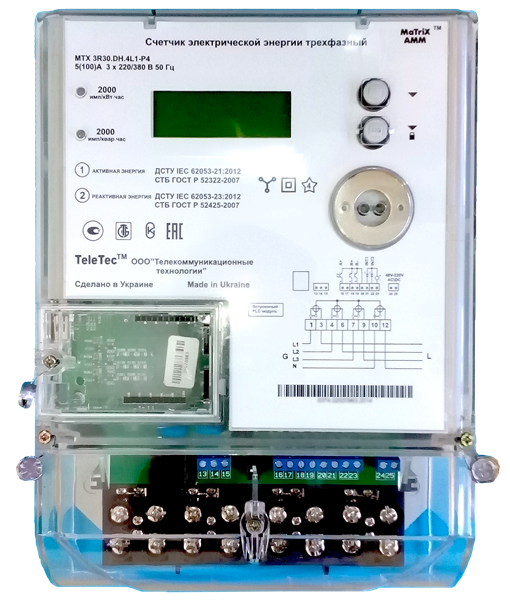
three phase electronic meter
Classification by accuracy class
The accuracy class shows the relative error (in percent) of this device when taking into account the energy consumed. According to the PUE, the accuracy class for meters should not be lower 2%. The higher the accuracy class, the smaller the measurement error of the device.
Classification by power and mounting method
To select a meter, it is necessary to take into account the current load on it. In other words, you first need to calculate the power consumption of all electrical appliances on average per day in your apartment, house or country house. Meters are manufactured for currents from 5 A to 100 A.
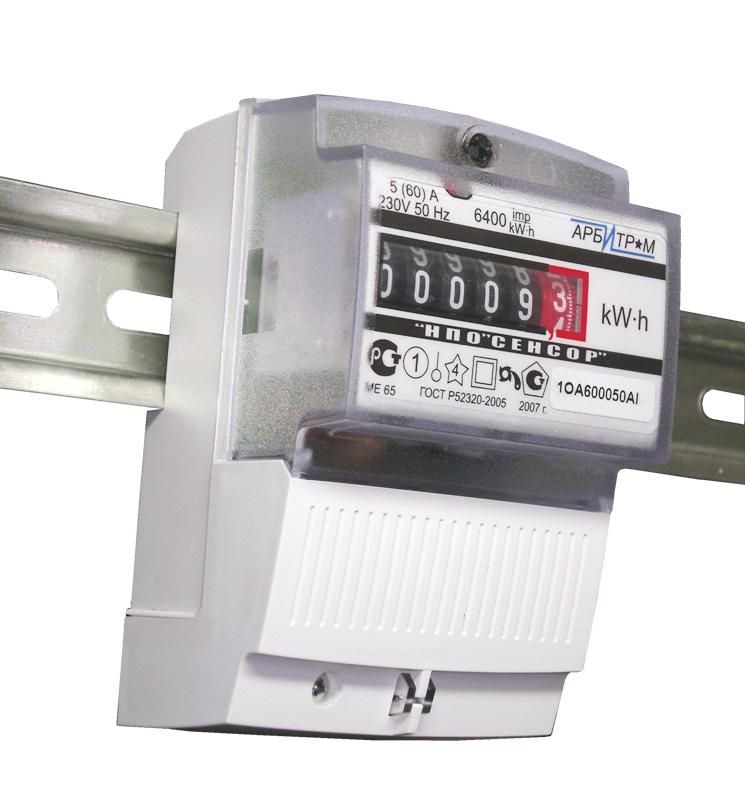
Din rail meter
The housing of the devices in question can be mounted with bolts or on a DIN rail. Although the mounting method does not have a decisive influence on the operation of the device, it can be important when installing it.
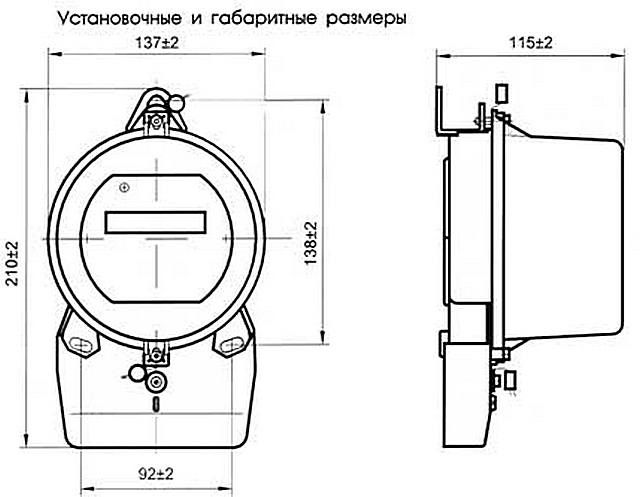
Bolt-on meter
Classification according to application conditions
There are meters designed to work only in heated rooms, as well as for the street. Here the consumer himself chooses which one is better to put in one place or another.
Which one is better to choose?
Knowing everything already existing species electricity metering devices, let’s decide which one would be better to choose for a house, apartment, cottage or garage.
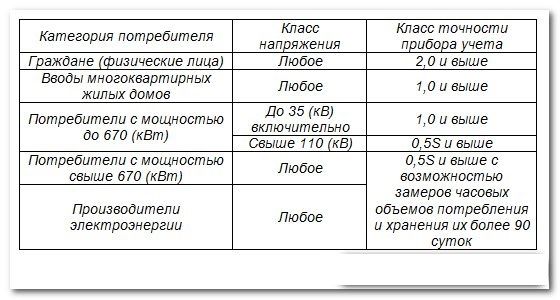
Counter accuracy classes
First of all, you need to pay attention to the power of this product. In order to choose correctly, you need to count total power loads from all electrical appliances located in the apartment or house. If the power is below 10 kW, then you will need to choose a 60 A meter, and if higher - then 100 A.
Based on practice, for ordinary apartment and at home a 60 A meter will be quite enough. You also need to look at the accuracy class of the device and its compliance with the requirements of the PUE.
Secondly, you need to decide on the type of device (induction or electronic) and the number of tariffs. Here the material capabilities of the consumer and personal preferences will come to the fore. For example, for a dacha it would not be advisable to overpay for a two-tariff electricity meter, since this is not a place of permanent residence.
Thirdly, you need to choose the type of device mount. It is better to choose a DIN rail mount, because it is universal. If you purchase an adapter strip, the device body can be mounted on the wall.
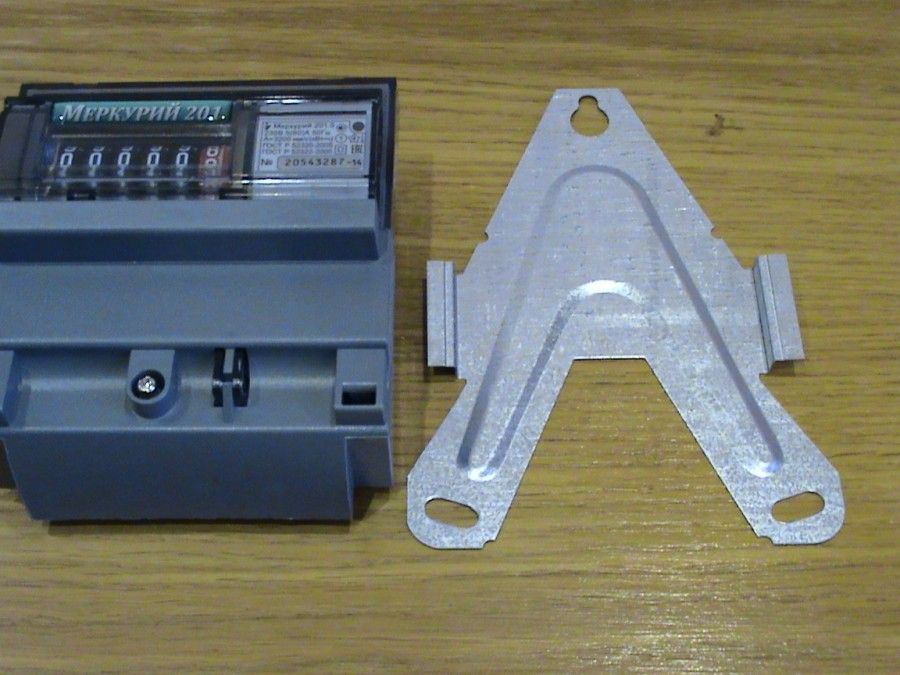
A counter that is attached to Din rail with strip for fastening bolts
To choose the most the best electricity meter We advise you to adhere to the following recommendations:
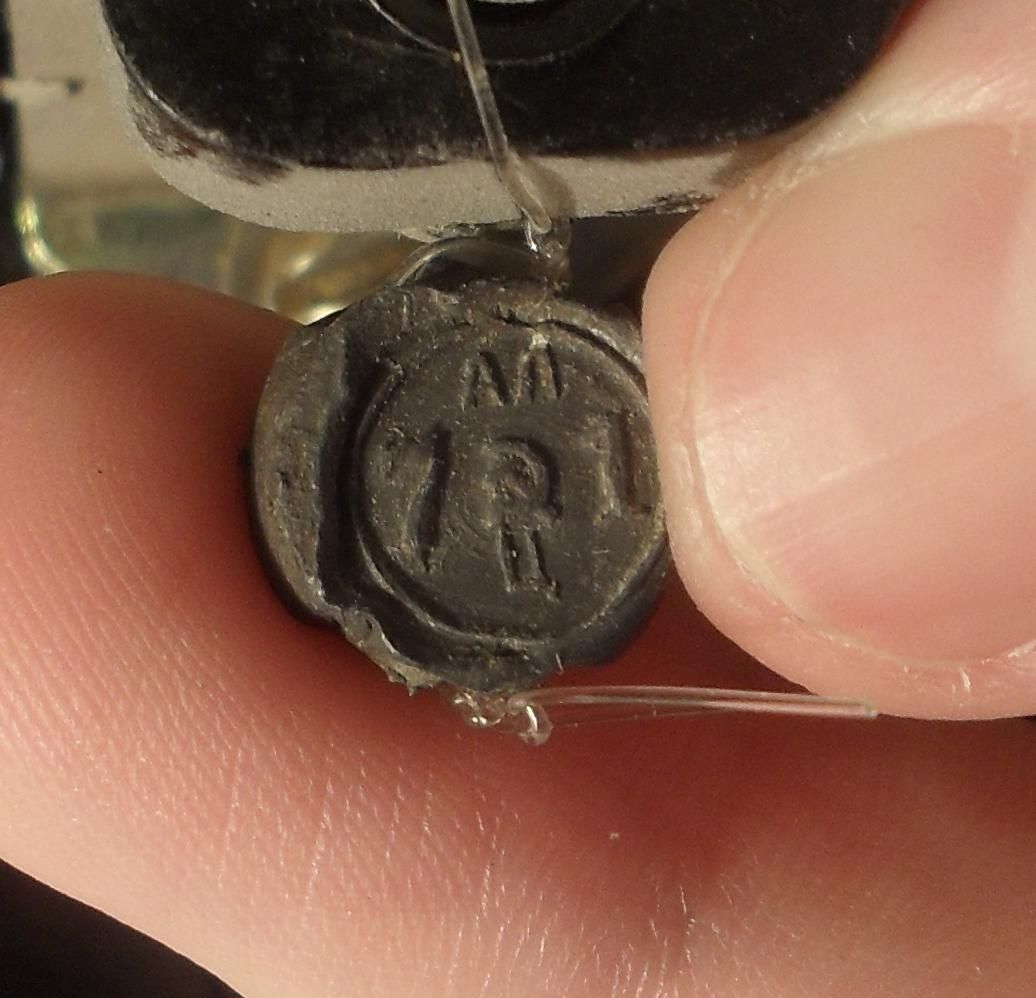
Add site to bookmarks
Load power calculation
Sometimes there is a need to find out how much individual electrical appliances consume in this moment time. To do this, you need to turn off unnecessary devices and turn on the ones you need. Next, count the number of disk revolutions or the number of pulses per minute depending on the type of counter and calculate using the formula:
W = (n * 60)/(Imp * t), kW
where W is the power consumption per hour, n is the number of pulses or disk revolutions over a certain period of time, Imp is the number of pulses or disk revolutions corresponding to 1 kW*h, t is time in minutes.
Electric meter connection diagrams

The phase wire and current coil are indicated in red; neutral wire and voltage coil are indicated in blue.
Connection diagram for a three-phase electric meter direct action(connections).
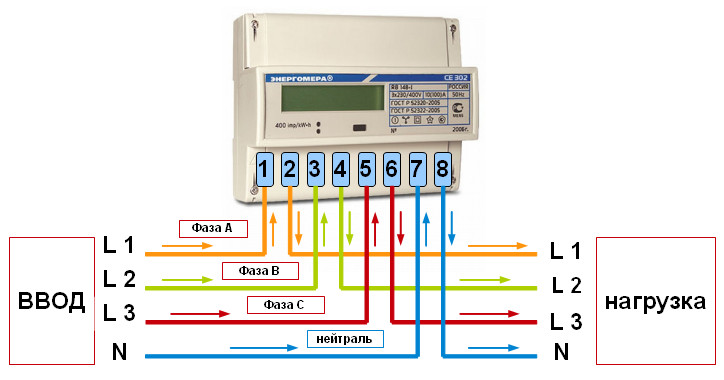
Phase "A" is indicated yellow, phase "B" - green, phase "C" - red, neutral wire "N" - blue; L1, L2, L3 - current coils; L4, L5, L6 - voltage coils; 2, 5, 8 - voltage screw; 1, 3, 4, 6, 7, 9, 10, 11 - terminals for connecting electrical wiring to the meter.
Connection diagram of a three-phase electric meter through current transformers.
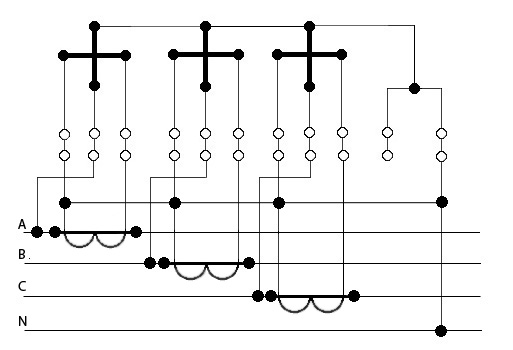
Connection diagram three-phase electric meter through current transformers.
Electric meters are usually installed in all apartments and private houses. They measure the energy consumed alternating current, because in any living space there are many modern household appliances. Availability of an electric energy meter – mandatory requirement all local energy sales companies, unless, of course, you are on a desert island and do not use electricity yourself obtained from solar or wind energy.
Meters are different and differ in the type of design and connection. In this article we will find out how to choose a single-phase electricity meter and connect this device in your home.
What does a single-phase electricity meter mean?
So, single-phase meters are designed to measure alternating current in a network with a voltage of 220 V and a frequency of 50 Hz (one phase and zero). These devices are installed in all city apartments, small shops, country houses, garages, etc. They are quite convenient to use and easy to take readings from.
Unlike single-phase ones, they are designed to work with a 380 V / 50 Hz network (three phases and zero). Typically these are houses, offices, administrative and industrial buildings with high electricity consumption. Typically, three-phase meter models are also used for single-phase metering.
How to choose a single-phase electricity meter?
When purchasing, pay attention to the labeling: devices that transmit single phase current, must be marked “CO”, in contrast to three-phase ones marked “ST”. As we have already found out, both types of meters are suitable for a single-phase network, but do not rush to buy a “more powerful” three-phase device for your home unless there is a special need. Indeed, due to the higher voltage in the case short circuit the consequences will be much more dangerous. At the same time, installation three-phase meter in an ordinary residential building it makes sense if you are afraid of overloading electrical network an abundance of powerful appliances, such as heating boilers, etc. The main thing is to treat the issue of fire safety with full responsibility.
However, ordinary single-phase meters are also different. First of all, they are divided into single-tariff and multi-tariff. This means dividing energy consumption into periods of time, which are charged differently. And since tariffs and conditions in regions and cities are different, the feasibility of installing a single-phase multi-tariff electricity meter instead of a single-tariff one should be calculated separately for each specific case.
In addition, there are induction (conventional) electricity meters and electronic models, some of them are equipped with a liquid crystal screen. The latter are considered more convenient and accurate.
How to connect a single-phase electricity meter?
Single phase meter The electrical appliance is easy to use but should only be installed by a professional electrician or someone with the appropriate skills and qualifications. For this you need, 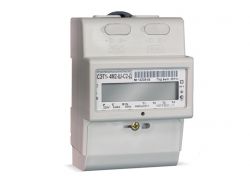 First of all, carefully study the documentation of the meter and its connection diagram, and also first de-energize the line. As a rule, any single-phase model has 4 contacts on the terminal block: this is the phase input to the apartment and its output, as well as the zero input from the external network and its output into the apartment. Actually, in this sequence you need to connect the meter wires to the contacts.
First of all, carefully study the documentation of the meter and its connection diagram, and also first de-energize the line. As a rule, any single-phase model has 4 contacts on the terminal block: this is the phase input to the apartment and its output, as well as the zero input from the external network and its output into the apartment. Actually, in this sequence you need to connect the meter wires to the contacts.
After installation, the meter must be sealed by employees of the local energy sales organization. And if the meter is replaced, you should contact the utility company in advance so that they remove the seal from the old one and immediately install it on the new device.
